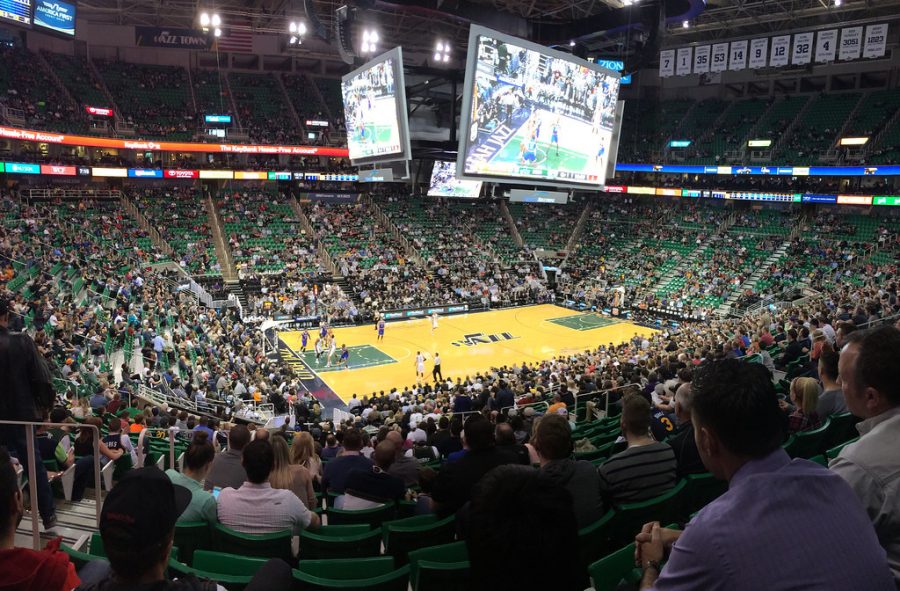Utah Jazz Season Grades: Part 2
July 26, 2021
As a Utah Jazz fan watching game 5 of the NBA Finals with Chris Paul and the Phoenix Suns trying to win their first NBA title over Giannis Antetokounmpo and the Milwaukee Bucks, I couldn’t help but think, “This should be the Jazz. I should be at this game right now.”
Alas, poorly timed injuries and an LA Clippers team that exploited the Jazz’s lack of roster versatility forced an unceremonious second-round exit that ended the most successful regular season since John Stockton and Karl Malone were leading the franchise.
Today, we continue our Utah Jazz individual grades with roster spots 10-17. We’ll even finish with an attempt at an unbiased assessment of the front office and coaching staff. Part 1 can be found here.
Ersan İlyasova
Signed on March 10 of this year, İlyasova was brought into the fold because of his 12 years of NBA experience and ability to stretch the floor from the power forward & center positions; but mostly, İlyasova was signed to fill a roster spot.
With that in mind, İlyasova never got much of a chance to bring on-court value to the Jazz. He appeared in 17 games, playing a total of 148 minutes in a Jazz uniform. His best performance came in a mid-April 20-point outburst that included 6-8 from behind the three-point line, illustrating his value as a stretch-big.
Whether it was his play or simply an unwillingness from Quin Snyder to be flexible with his lineups, İlyasova went largely unnoticed in Utah, only playing three playoff minutes on a blowout loss to the LA Clippers.
Final Grade: C
Miye Oni
Hustle, heart, tenacity, high-motor and effort; these are all words that can be used to describe what Oni brings to the Utah Jazz. Sounds awesome right? All of these traits are intangibles that go into creating some of the greats, but those greats also have the individual skills to parlay those intangibles into NBA success.
Oni passes the eye test when matching up to NBA athleticism, but he often plays too fast for his own good, leading to defensive possessions where he finds himself out of position and forced to foul. This could be a by-product of the leap in competition faced by the second-year guard, as he didn’t face much NBA-level talent while playing for Yale in the Ivy League.
Oni spent most of the season getting inconsistent minutes, typically playing only when one of the Jazz main nine rotation players sat. At times his play was promising but Oni struggled to find consistency with his shot and was unable to develop into the perimeter defensive threat the Jazz needed so badly in the playoffs.
Final Grade: C-
Jarrell Brantley
It’s hard to look at Brantley and think he doesn’t belong in the NBA. Listed at 6-foot-5, 250 pounds, he has the prototype build and athleticism to be a mismatch on offense and a multi-positional defender.
A second-year player out of the College of Charleston, Brantley has had a steep learning curve to earn NBA minutes. If Quin Snyder and the Jazz had their druthers, Brantley probably would have spent a majority of the season gaining experience in the G-League — a league that he torched in his rookie year to the tune of 18.8 points, 7.6 rebounds and nearly 4 assists per game while gaining MVP votes and being named to All-G-League first-team.
Unfortunately, the Jazz chose to keep Brantley with the team instead of sending him to the G-League bubble, limiting his chance at on-court development, just another of the handful of puzzling developmental decisions made by the Jazz in the past three seasons.
When he did play, Brantley was serviceable if unreliable. Seeing action in only 28 games and averaging fewer than five minutes per appearance, what Brantley could be is just as much of a question mark today as it was when he was drafted in 2019.
Final Grade: D+
Juwan Morgan
The last in our triumvirate of second-year players, Morgan just might be the most mysterious of the three. Take a trip down memory lane with me to Aug. 17, 2020. The stage is game 1 of the Jazz first round series vs. the Denver Nuggets. With Mike Conley MIA due to the birth of his child, Morgan got the surprise start.
For an un-drafted rookie that had initially been cut by the Jazz during training camp, his first career start coming in the playoffs was unexpected. In 25 minutes that night, Morgan finished with three points and seven rebounds, all while managing to not look completely out of place.
Hope across Jazz-land was that Morgan may be able to fill a small-ball center role that the Jazz had lacked in previous years.
Now fast forward once again to present time. I would peg the odds of Morgan returning next season at 80/20 against. Fighting injury and illness for a good portion of the year, Morgan played in 29 games and never approached the 25 minutes played on that August afternoon. If anything, it appeared as though Morgan may have regressed after his rookie season.
Final Grade: D-
Matt Thomas
Thomas was acquired at the trade deadline for a bag of peanuts and some shoe cleaner… just kidding. It was in a second-round pick that settled in at no. 47 overall. But if you watched Thomas in a Jazz uniform, outside of a 17-point outburst against Sacramento, he was largely forgettable.
Pegged as a three-point marksman, Thomas struggled to hit from the outside consistently in sporadic minutes. If Thomas does not return next season, that second-round pick will be a wasted asset.
Final Grade: F
Elijah Hughes
A second-round pick out of Syracuse, there was little expectation among the Jazz brass of Hughes contributing significantly this season. Hughes was a developmental pick with a bag full of offensive tools and limitless range, but a need to learn NBA defensive fundamentals at a level that will allow his offense to take center stage. Older Jazz fans can think of Morris Almond type skills.
Hughes missed time due to an ankle injury but showed his offensive prowess nearly every time he stepped on the floor. If a year of watching and learning has paid dividends, Hughes could find himself fighting for a rotation spot next season.
Final Grade: B-
Trent Forrest
Remember when I started this article by calling it an unbiased look? Yeah? Well, throw that out the window when it comes to Forrest. Un-drafted out of Florida State, Forrest is a guy the Jazz seem to like. Personally, I believe he will be the back-up point guard in the near future.
The unquestioned leader of some talented Seminole teams, Forrest can’t shoot a lick; like, not at all. Forrest shot 28% on threes in four years at Florida State, but does show some hope in his shooting stroke as he posted a career 75% free throw rate, including connecting at an 82% clip his senior year.
If Forrest can develop a passable jump shot, his 6-foot-4, 210 pound body has everything to be an NBA point guard for years to come: just watch the tape. Forced into action when injuries struck late in the year, Forrest was the only healthy true PG on the roster and flashed his potential on numerous occasions.
Final Grade: B+
Udoka Azubuike
The Jazz 2020 first round pick out of Kansas, Azubuike was a controversial selection and the controversy has only grown over time. Destined to ride the bench and learn behind the best defensive center in the league, Rudy Gobert, and behind the returning Derrick Favors, many wondered why Azubuike was even a consideration.
An inopportune severe ankle sprain in his first G-League game cost “Big Dok” the majority of his rookie season and leaves him as a big question mark moving forward.
Final Grade: D








